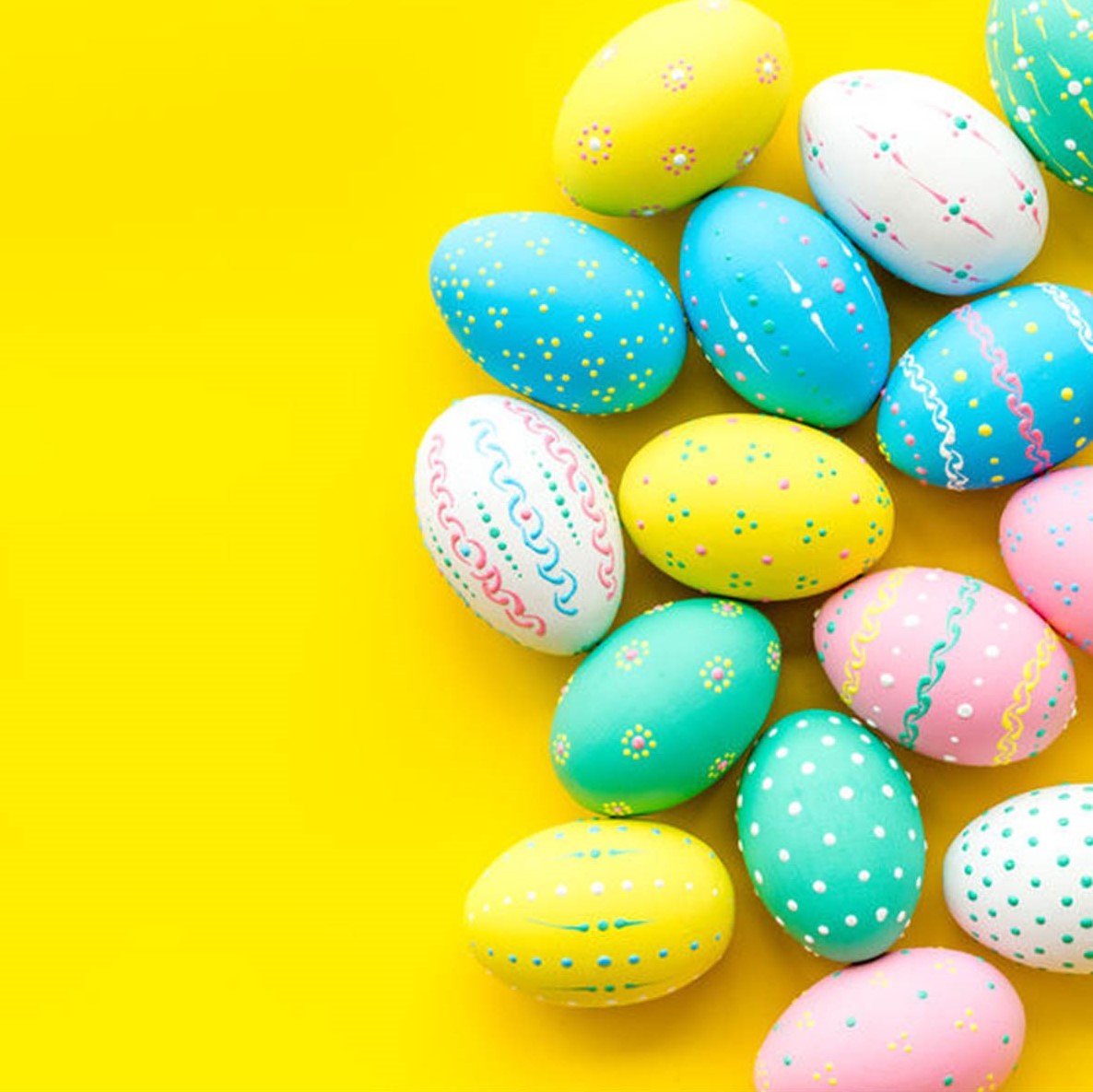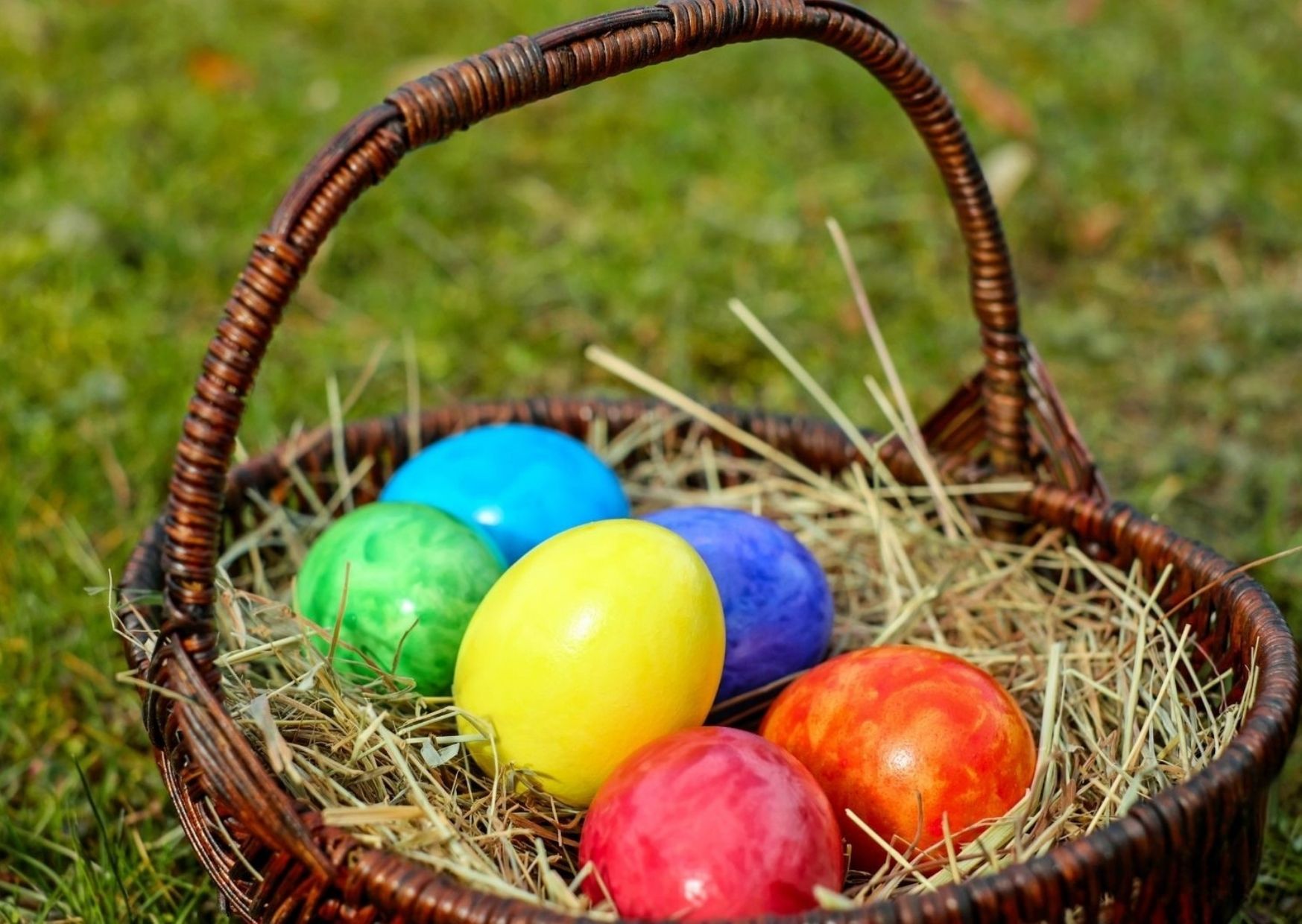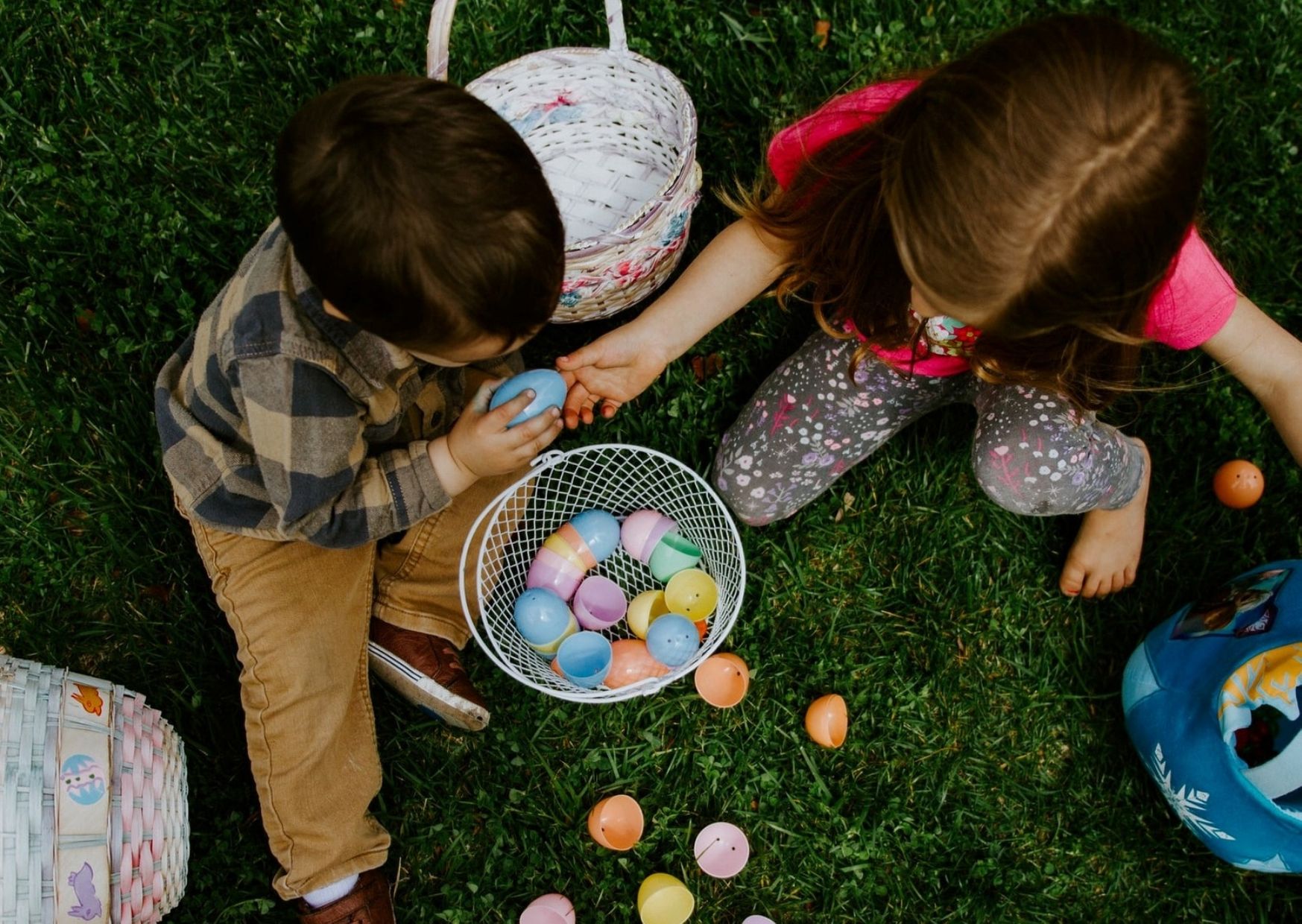What's your favourite Easter tradition?

date: 04/03/2021
What is the first thing that springs to mind when you think of Easter?
Safia (France): "When I think of Easter in France, I think of a big garden, a massive egg hunt and more chocolate than you could possibly eat. According to tradition, it is a rabbit who comes to put chocolate eggs all around the garden. I don't think children believe in the rabbit in the same way that they believe in Santa, but they definitely believe in their ability to eat a lot of chocolate on the day!"
Merle and Siiri (Estonia): "The most widespread Easter holiday tradition that Estonians have is painting boiled eggs. So much so that, among the other, more traditional and religious names, the holiday is even called 'the egg holidays' or 'munapühad' " (Merle). "Another really important part of our Easter tradition is egg tapping. Usually two people participate simultaneously, each choosing a boiled coloured egg, then they start knocking their egg against the other person's egg while trying not to break their own. The one whose egg remains unbroken is the winner" (Siiri).

Food, food, food! Let's talk about this very important part of any big holiday:
Elisabeta (Romania): "Besides eggs, there is usually lamb - one famous dish is lamb haggins, made of lamb organs and a lot of greens like parsley, dill, and green onions. Another must-have Easter food is pasca, a sweet bread filled with cheese and raisins".
Annamaria (Hungary): "We celebrate Easter with a big brunch on Sunday morning, after Sunday mass, with newly smoked ham, sweet bread, a lot of vegetables and boiled eggs. It usually follows 40 days of fasting […] and used to be the first big meat-eating occasion after the Christmas holidays."
Annemarie (Slovenia): "The typical Easter dishes, meat, horseradish, bread or potica, and pirhi (colored boiled eggs) - which reflect the cultural diversity and creativity of Slovenia - should always be on the table! Despite the hearty meal, gourmets will also find room for potica, a delicious traditional Slovenian dessert".
Catherine (Croatia): "We bake a sort of brioche bread called pogačice and all the food that we make for Easter is brought to church to be blessed by the priest in a basket. The food is then enjoyed by all the family and since the food is blessed it is very important not to leave any crumbs behind!"

Tell us about something you find fascinating or random
Jochem (Netherlands): "In the Netherlands, the Easter bunny or 'paashaas', is not a bunny, but a hare!"
Manon (France): "After mass, kids are invited to find chocolate eggs in the garden or in the apartment. The tradition is to tell them that the chocolates were lost along the way by church bells returning from Rome. They had previously flown there to receive a blessing."
Isabelle (Germany): "Especially in rural areas, the Easter fire tradition is also an event, where people from the village gather to burn old Christmas trees together to drive away evil spirits - this usually includes a few beers".
Beatrix (Spain): "In Spain we have traditional processions, where famous religious images or 'pasos' parade through the streets. People go behind them and under them, sometimes they are so heavy that 100 people are needed to carry them."
Andreia (Portugal): "Easter celebrations start on the Sunday before Easter Sunday when godchildren usually give presents to their godparents, usually a drawing or some flowers. Then on Easter Sunday, it is the godparents' turn to give their godchildren a present ."
Elisabeta (Romania): "On Sunday, when the service begins at midnight the priest comes down from the altar and starts 'giving light' to the church congregation. Everybody lights their candle from the priest’s candle. This is considered the 'new fire' and represents the rising of Christ and a symbol of life. […] You are supposed to bring this light home and let it burn in your house to purify it. The tricky part here is that the lit candle must stay lit all the way home".

